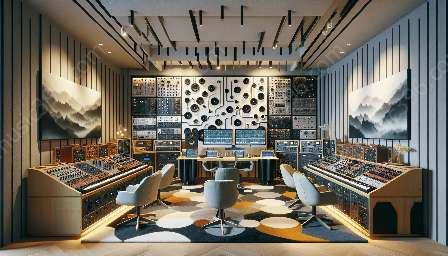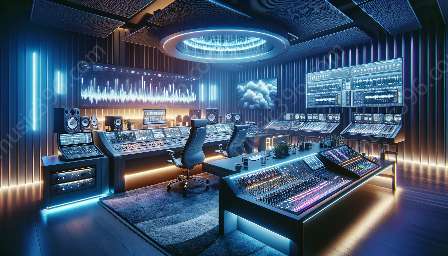Music production is a multifaceted art form that requires a deep understanding of various compositional elements. One such element is timbre, which plays a crucial role in creating diverse and captivating musical pieces. In this article, we'll explore how timbre can be effectively utilized in music production as a compositional tool, and how it is analyzed in the context of music theory.
The Importance of Timbre in Music Production
Timbre, often referred to as the 'color' or 'texture' of sound, is the unique quality that distinguishes one instrument or voice from another, even when they are playing the same pitch at the same volume. It encompasses a wide range of sonic characteristics, such as tone, resonance, and harmonics, and can greatly influence the overall emotional impact and mood of a musical composition.
When it comes to music production, timbre serves as a powerful tool for enhancing the depth and richness of a piece. By carefully choosing and orchestrating various timbres, composers and producers can evoke specific moods, convey nuanced emotions, and create a sense of space within the music. Moreover, timbral variation can be used to differentiate different sections of a composition, adding interest and diversity to the overall sonic landscape.
Utilizing Timbre as a Compositional Element
There are several ways in which timbre can be effectively utilized as a compositional element in music production. One approach is through the deliberate selection of instruments and their sonic qualities to achieve a desired tonal palette. For instance, combining the warm, rich timbre of a cello with the bright, percussive timbre of a piano can create a compelling sonic contrast that adds depth and character to a musical piece.
Another method involves the manipulation of timbre through electronic effects and processing. Modern music production technology offers a plethora of tools and techniques for altering and shaping timbre to suit the creative vision of the composer. This can involve modifying the harmonic content of a sound, applying filtering and modulation effects, or even creating entirely new synthetic timbres through sound synthesis.
Furthermore, timbral variation can be employed to structure and develop musical ideas within a composition. By carefully modulating the timbral characteristics of a musical motif or theme, composers can guide the listener through a journey of sonic evolution, creating dynamic contrasts and engaging musical narratives.
Timbre in Music Analysis
As an essential component of music theory and analysis, timbre is examined in relation to its contribution to the overall musical structure and expressive intent. In music analysis, scholars and musicians delve into the intricate details of timbral nuances, seeking to uncover the subtle shifts and interactions that shape a musical work.
Timbre analysis often involves identifying and categorizing the specific sonic attributes of individual instruments or voices within a composition, as well as exploring the timbral relationships between different musical elements. This process not only aids in understanding the composer's creative choices but also provides valuable insights into the emotional and psychological impact of timbral manipulation on the listener.
Moreover, modern music analysis techniques incorporate technological advancements to conduct in-depth timbral analysis. With the aid of spectrographic visualization, digital signal processing, and other analytical tools, researchers can dissect and annotate the intricate timbral structures of musical works, unveiling hidden layers of sonic complexity and artistic intent.
In Conclusion
Timbre is a central and versatile element in music production, offering composers and producers a rich palette of sonic colors to paint their musical canvas. By skillfully incorporating timbral variation and manipulation, music creators can craft compelling and evocative compositions that resonate with audiences on a profound emotional level. Furthermore, the analysis of timbre provides valuable insights into the intricate nuances and expressive potential within music, enriching our understanding and appreciation of the art form.
As technology continues to evolve, the exploration and utilization of timbre as a compositional and analytical tool will undoubtedly remain an exciting and dynamic frontier in the realm of music production and music theory.

































